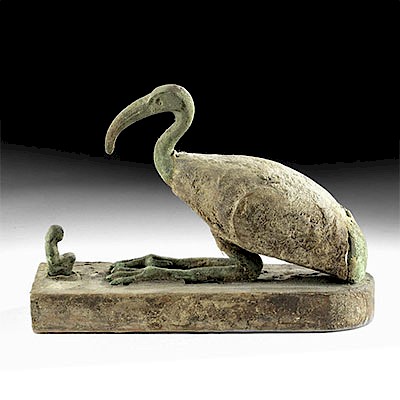Greek Campanian Red-Figure Pedestal Fish Plate
Lot 36a
About Seller
Artemis Fine Arts
686 S Taylor Ave, Ste 106
Louisville, CO 80027
United States
Selling antiquities, ancient and ethnographic art online since 1993, Artemis Gallery specializes in Classical Antiquities (Egyptian, Greek, Roman, Near Eastern), Asian, Pre-Columbian, African / Tribal / Oceanographic art. Our extensive inventory includes pottery, stone, metal, wood, glass and textil...Read more
Estimate:
$4,500 - $6,500
Absentee vs Live bid
Two ways to bid:
- Leave a max absentee bid and the platform will bid on your behalf up to your maximum bid during the live auction.
- Bid live during the auction and your bids will be submitted real-time to the auctioneer.
Bid Increments
| Price | Bid Increment |
|---|---|
| $0 | $25 |
| $300 | $50 |
| $1,000 | $100 |
| $2,000 | $250 |
| $5,000 | $500 |
| $10,000 | $1,000 |
| $20,000 | $2,500 |
| $50,000 | $5,000 |
| $100,000 | $10,000 |
| $200,000 | $20,000 |
About Auction
By Artemis Fine Arts
Oct 31, 2019
Set Reminder
2019-10-31 10:00:00
2019-10-31 10:00:00
America/New_York
Bidsquare
Bidsquare : Fine Antiquities, Asian, Ethnographic Art
https://www.bidsquare.com/auctions/artemis-gallery/fine-antiquities-asian-ethnographic-art-4581
Our Halloween Day auction features classical antiquities, ancient and ethnographic art from cultures encompassing the globe, plus fine art. Artemis Fine Arts info@artemisgallery.com
Our Halloween Day auction features classical antiquities, ancient and ethnographic art from cultures encompassing the globe, plus fine art. Artemis Fine Arts info@artemisgallery.com
- Lot Description
Magna Graecia, Southern Italy, Campania, ca. 360 to 340 BCE. A lovely wheel-thrown ceramic fish plate of a classic pinax or pinakion (meaning "tablet" for its shape) form with a trio of fish painted via the red-figure technique with added fugitive white and black details, the three sea creatures swimming around a central garum (fish sauce) recess with a concave red border. The perimeter of the downturned rim is adorned with a fine band of spiraling waves; the entire dimpled disk form is elevated on a raised pedestal foot. Size: 7.125" W x 2.625" H (18.1 cm x 6.7 cm).
Fish plates were initially produced in Athens during the late fifth century BCE characterized by fish with bellies oriented towards the outside rim of the plate. While in Athens the palette was limited to a red clay fabric and black gloss slip with only rare uses of white overpainting, later examples from Greek settlers in Southern Italy (Taranto, Paestum, Capua, and Cumae) were more colorful with added white and yellow pigments. The South Italian fish plates also departed from Attic examples in that they were characterized by decoration in which the fish's bellies were oriented inwards towards the sauce cup at the center of the plate, as we see in this example.
A stylistically similar example hammered for GBP 6,250 ($8,329.28) at Christie's, London Antiquities Auction (sale 12239, July 6, 2016, lot 70).
Provenance: private East Coast, USA collection; ex-Artemis Gallery; ex-private New Jersey, USA collection; ex-private Texas, USA collection, acquired in the 1980s
All items legal to buy/sell under U.S. Statute covering cultural patrimony Code 2600, CHAPTER 14, and are guaranteed to be as described or your money back.
A Certificate of Authenticity will accompany all winning bids.
We ship worldwide and handle all shipping in-house for your convenience.
#149760Plate and foot repaired from several large pieces with some areas of restoration, resurfacing, and overpainting, and light adhesive residue along break lines. Surface wear and abrasions commensurate with age as expected, small nicks to foot, underside, rim, and top, and fading and some overpainting to pigmentation. Light earthen and mineral deposits along underside. Old inventory sticker on underside of foot.Condition
- Shipping Info
-
All shipping is handled in-house for your convenience. Your invoice from Artemis Gallery will include shipping calculation instructions. If in doubt, please inquire BEFORE bidding for estimated shipping costs for individual items.
-
- Buyer's Premium



 EUR
EUR CAD
CAD AUD
AUD GBP
GBP MXN
MXN HKD
HKD CNY
CNY MYR
MYR SEK
SEK SGD
SGD CHF
CHF THB
THB













